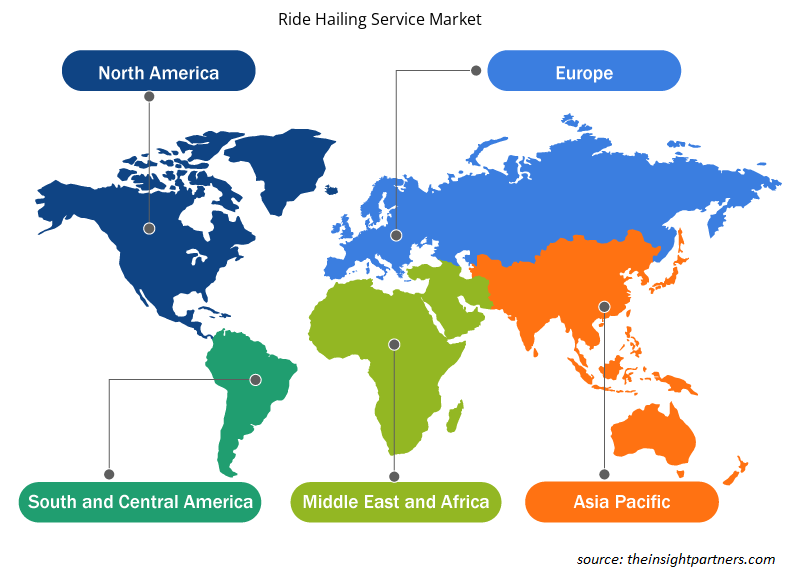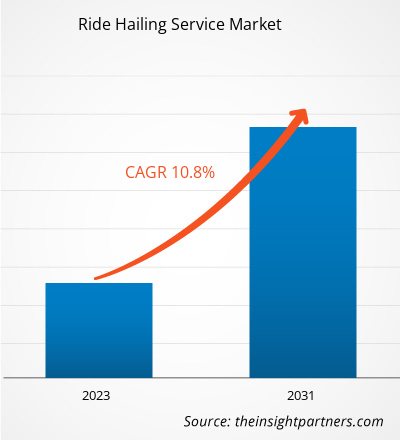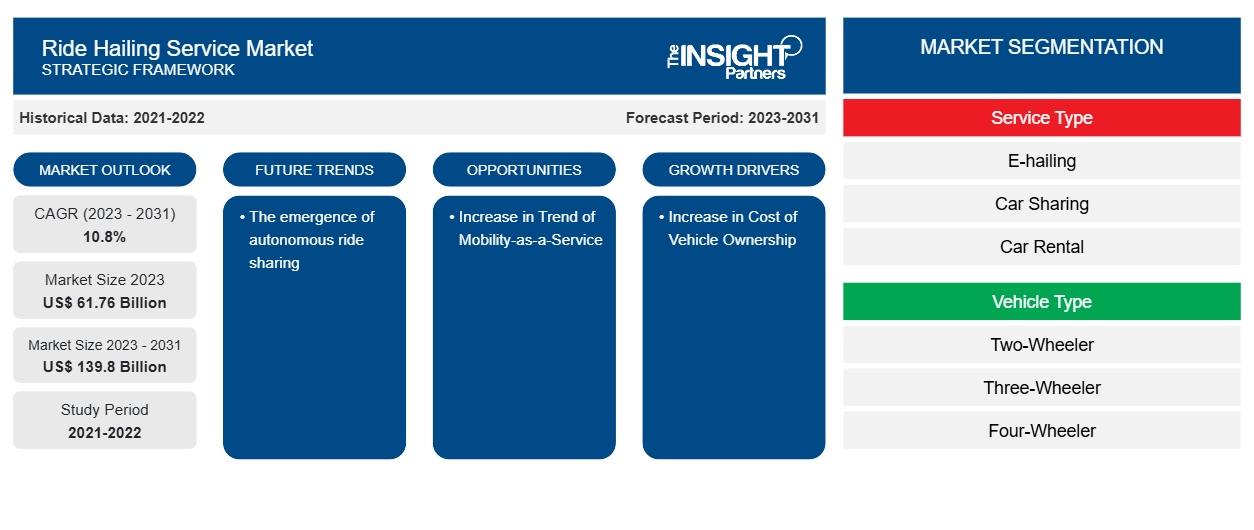승차 공유 서비스 시장 규모는 2023년 617억 6천만 달러에서 2031년까지 1,398억 달러에 도달할 것으로 예상됩니다. 이 시장은 2023~2031년 동안 10.8%의 CAGR을 기록할 것으로 예상됩니다. 자율 주행 승차 공유의 출현은 시장의 주요 트렌드로 남을 가능성이 높습니다.
승차 서비스 시장 분석
전 세계적으로 온디맨드 운송 서비스 추세가 증가함에 따라 향후 몇 년 동안 시장 성장이 촉진될 것으로 예상됩니다. 또한, 차량 소유 비용의 증가로 인해 예측 기간 동안 승차 공유 서비스에 대한 수요가 증가할 것으로 예상됩니다. 게다가 전 세계적으로 모빌리티 서비스로서의 추세가 증가함에 따라 승차 공유 서비스 시장이 2023년부터 2031년까지 더욱 성장할 것으로 예상됩니다.
승차 서비스 시장 개요
승차 서비스 시장 생태계의 주요 이해 관계자에는 기술 솔루션 제공자, 승차 서비스 제공자 및 최종 사용자가 포함됩니다. 기술 솔루션 제공자에는 연결된 장치 또는 기타 하드웨어 제조업체와 소프트웨어 개발자가 포함됩니다. 기술 솔루션 제공자 수의 증가는 승차 서비스의 디지털화를 크게 주도하고 있습니다. 승차 서비스는 주문형 운송 서비스의 증가 추세, 고용 기회 창출, 밀레니얼 세대의 자동차 소유율이 낮아 COVID 이후 증가할 것으로 예상됩니다. 또한 CO2 배출을 줄이기 위한 연결 및 자동 차량 의 기술적 발전 과 승차 서비스 사용을 위한 이러한 스마트하고 효율적인 차량의 판매가 크게 증가하면서 글로벌 시장 성장이 촉진됩니다. 승차 서비스 제공자는 기술 솔루션 제공자로부터 서비스를 받습니다. 승차 서비스의 기술 개발이 증가함에 따라 승차 서비스 시장에 대한 수요가 증가하고 있습니다.
귀하의 요구 사항에 맞게 이 보고서를 사용자 정의하세요
이 보고서의 일부 또는 국가 수준 분석, Excel 데이터 팩을 포함하여 모든 보고서에 대한 사용자 정의를 무료로 받을 수 있으며 신생 기업 및 대학을 위한 훌륭한 혜택과 할인 혜택을 이용할 수 있습니다.
-
이 보고서의 주요 시장 동향을 알아보세요.이 무료 샘플에는 시장 동향부터 추정 및 예측까지 다양한 데이터 분석이 포함됩니다.
승차 서비스 시장 동인 및 기회
자동차 소유 비용 증가로 시장이 유리해진다
금융, 연료, 유지 관리, 등록/세금 및 유지 관리와 감가 상각은 모두 자동차 소유 비용에 기여합니다. 차량 소유 비용은 해마다 증가합니다. 미국 자동차 협회(AAA)에 따르면 감가 상각은 총 소유 비용의 43% 이상을 차지합니다. 그러나 유지 관리 및 가솔린 과 같은 다른 비용은 25%를 차지합니다. 연료 가격과 유지 관리 비용의 증가는 지난 10년 동안 극적으로 증가했으며 향후 몇 년 동안 증가할 것으로 예상됩니다. 자동차 소유는 팬데믹 동안 증가했지만 2021년 이후에는 감소하여 팬데믹 이전 수준으로 돌아갈 것으로 예상됩니다. 이를 통해 승차 공유 제공자는 이러한 인구 통계적 발전의 혜택을 누릴 수 있는데, 새로운 기술에 정통한 세대가 이러한 서비스를 가장 적극적으로 사용하기 때문입니다.
모빌리티 서비스(Mobility-as-a-Service) 추세 증가
차량을 구매할 수 없는 고객은 모빌리티 서비스를 통해 원활한 여행을 경험할 수 있습니다. 모빌리티 서비스로서(Mobility-as-a-Service)는 카셰어링 및 승차 공유 비용을 극대화하여 소유 및 운영 비용을 줄입니다. 또한 도시화의 빠른 속도로 이미 교통 체증이 발생하고 있습니다. 모빌리티 서비스(MaaS) 개념은 기존 대중 및 개인 교통망을 더 많이 사용하여 교통 체증을 최소화하는 데 더 나은 선택일 수 있습니다. 스마트 시티에서 교통을 처리하기 위한 효과적인 솔루션에 대한 긴급하고 증가하는 수요는 2031년까지 승차 공유 서비스 시장 성장을 촉진할 것으로 예상됩니다. 따라서 모빌리티 서비스(MaaS)의 증가 추세는 글로벌 승차 공유 서비스 시장 성장을 촉진할 것으로 예상됩니다.
라이드 헤일링 서비스 시장 보고서 세분화 분석
승차 서비스 시장 분석 도출에 기여한 주요 세그먼트는 서비스 유형, 차량 유형, 위치 및 최종 사용자입니다.
- 서비스 유형에 따라 승차 공유 서비스 시장은 E-hailing, 카셰어링, 렌터카, 스테이션 기반 모빌리티로 구분됩니다. E-hailing 세그먼트는 2023년에 가장 큰 시장 점유율을 차지했습니다.
- 차량 유형별로 시장은 2륜차, 3륜차, 4륜차 및 기타로 세분화됩니다. 4륜차 세그먼트는 2023년에 시장에서 가장 큰 점유율을 차지했습니다.
- 위치를 기준으로 시장은 도시와 농촌으로 나뉩니다. 도시 세그먼트는 2023년에 시장에서 상당한 점유율을 차지했습니다.
- 최종 사용자 기준으로 시장은 기관 및 개인으로 세분화됩니다. 기관 세그먼트는 2023년에 시장에서 더 큰 점유율을 차지했습니다.
지역별 승차 서비스 시장 점유율 분석
승차 서비스 시장 보고서의 지리적 범위는 주로 북미, 아시아 태평양, 유럽, 중동 및 아프리카, 남미의 5개 지역으로 나뉩니다.
승차 서비스 시장 보고서의 범위는 북미(미국, 캐나다, 멕시코), 유럽(독일, 프랑스, 이탈리아, 스페인, 영국, 유럽의 나머지 지역), 아시아 태평양(중국, 인도, 호주, 일본, 한국, 아시아 태평양의 나머지 지역), 중동 및 아프리카(남아프리카, 사우디 아라비아, UAE, 중동 및 아프리카의 나머지 지역), 남미(브라질, 아르헨티나, 남미의 나머지 지역)를 포함합니다. 수익 측면에서 아시아 태평양은 2023년 승차 서비스 시장 점유율을 지배했습니다. 북미는 글로벌 승차 서비스 시장에서 두 번째로 큰 수익 기여자였으며, 그 뒤를 유럽이 이었습니다.
승차 서비스 시장 지역 통찰력
Insight Partners의 분석가들은 예측 기간 동안 승차 서비스 시장에 영향을 미치는 지역적 추세와 요인을 철저히 설명했습니다. 이 섹션에서는 북미, 유럽, 아시아 태평양, 중동 및 아프리카, 남미 및 중미의 승차 서비스 시장 세그먼트와 지리에 대해서도 설명합니다.

- 라이드 헤일링 서비스 시장에 대한 지역별 특정 데이터 얻기
승차 서비스 시장 보고서 범위
| 보고서 속성 | 세부 |
|---|---|
| 2023년 시장 규모 | 617억 6천만 달러 |
| 2031년까지 시장 규모 | 1,398억 달러 |
| 글로벌 CAGR (2023-2031) | 10.8% |
| 역사적 데이터 | 2021-2022 |
| 예측 기간 | 2023-2031 |
| 다루는 세그먼트 |
서비스 유형별
|
| 포함된 지역 및 국가 |
북아메리카
|
| 시장 선도 기업 및 주요 회사 프로필 |
|
승차 서비스 시장 참여자 밀도: 비즈니스 역학에 미치는 영향 이해
승차 서비스 시장 시장은 소비자 선호도의 변화, 기술 발전, 제품의 이점에 대한 인식 증가와 같은 요인으로 인해 최종 사용자 수요가 증가함에 따라 빠르게 성장하고 있습니다. 수요가 증가함에 따라 기업은 제품을 확장하고, 소비자의 요구를 충족하기 위해 혁신하고, 새로운 트렌드를 활용하여 시장 성장을 더욱 촉진하고 있습니다.
시장 참여자 밀도는 특정 시장이나 산업 내에서 운영되는 회사나 기업의 분포를 말합니다. 주어진 시장 공간에 얼마나 많은 경쟁자(시장 참여자)가 존재하는지 그 규모나 총 시장 가치에 비해 나타냅니다.
승차 서비스 시장에서 운영되는 주요 회사는 다음과 같습니다.
- ANI 테크놀로지스 주식회사
- 다임러 AG
- 델파이 테크놀로지스 PLC
- 디디 글로벌 주식회사
- 겟
- 그랩 홀딩스 주식회사
면책 조항 : 위에 나열된 회사는 어떤 특별한 순서에 따라 순위가 매겨지지 않았습니다.

- 라이드 헤일링 서비스 시장 주요 업체 개요 알아보기
승차 서비스 시장 뉴스 및 최근 개발
승차 서비스 시장은 1차 및 2차 조사 이후의 질적, 양적 데이터를 수집하여 평가합니다. 여기에는 중요한 기업 간행물, 협회 데이터, 데이터베이스가 포함됩니다. 승차 서비스 시장의 몇 가지 개발 사항은 다음과 같습니다.
- 승차 공유 서비스 제공업체 카카오모빌리티가 아시아와 중동에서 승차 공유 서비스를 출시하며 입지를 확대했습니다. (출처: 카카오모빌리티, 보도자료, 2023년 11월)
- DiDi Global Inc.는 남아프리카 공화국 케이프타운에서 운전자 등록 절차를 시작했으며, 이 나라에서 두 번째로 큰 도시의 소비자에게 승차 공유 서비스를 제공하기 시작했습니다. (출처: DiDi Global Inc., 보도자료, 2021년 3월)
승차 서비스 시장 보고서 범위 및 제공물
"라이드 헤일링 서비스 시장 규모 및 예측(2021-2031)" 보고서는 아래 영역을 포괄하는 시장에 대한 자세한 분석을 제공합니다.
- 범위에 포함된 모든 주요 시장 세그먼트에 대한 글로벌, 지역 및 국가 수준의 승차 서비스 시장 규모 및 예측
- 승차 서비스 시장 동향 및 운전자, 제지장치, 주요 기회와 같은 시장 역학
- 자세한 PEST 및 SWOT 분석
- 주요 시장 동향, 글로벌 및 지역 프레임워크, 주요 업체, 규정 및 최근 시장 동향을 포괄하는 승차 서비스 시장 분석
- 시장 집중도, 히트맵 분석, 유명 업체, 승차 서비스 시장의 최근 개발 사항을 포함하는 산업 환경 및 경쟁 분석
- 자세한 회사 프로필
- 과거 분석(2년), 기준 연도, CAGR을 포함한 예측(7년)
- PEST 및 SWOT 분석
- 시장 규모 가치/거래량 - 글로벌, 지역, 국가
- 산업 및 경쟁 환경
- Excel 데이터세트
최근 보고서
사용 후기
구매 이유
- 정보에 기반한 의사 결정
- 시장 역학 이해
- 경쟁 분석
- 고객 인사이트
- 시장 예측
- 위험 완화
- 전략 기획
- 투자 타당성 분석
- 신흥 시장 파악
- 마케팅 전략 강화
- 운영 효율성 향상
- 규제 동향에 발맞춰 대응























 무료 샘플 받기 - 승차 공유 서비스 시장
무료 샘플 받기 - 승차 공유 서비스 시장